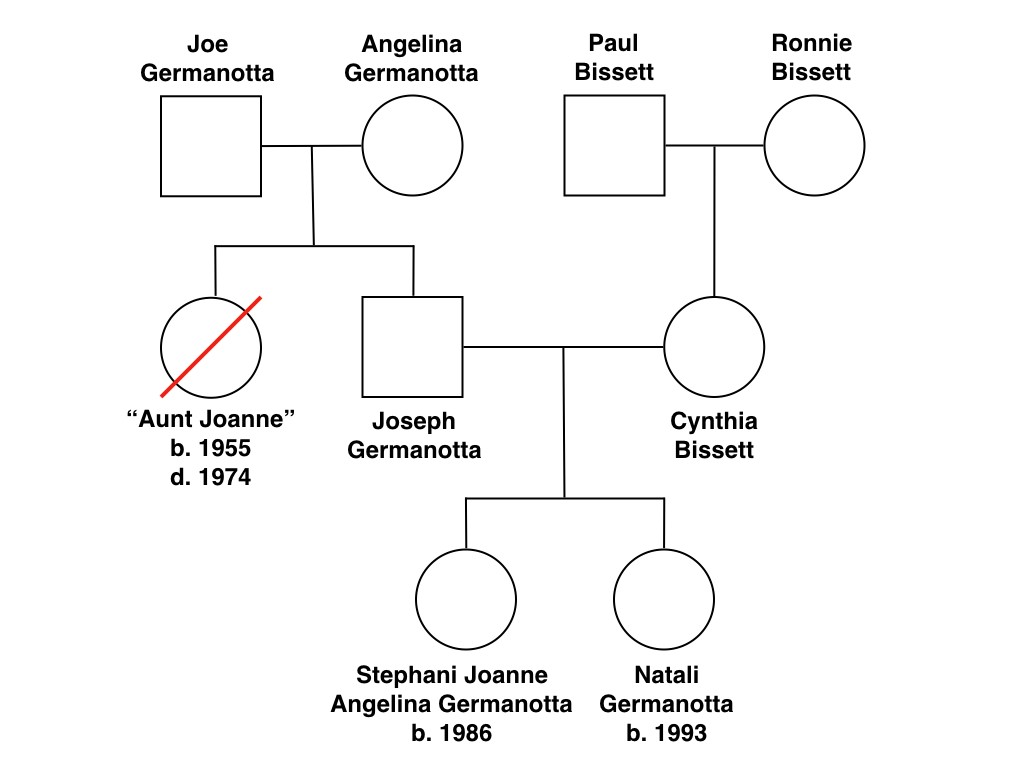“Don’t call me Gaga, call me Joanne!” How to Best Depression and Anxiety

On Friday, September 1, 2017, 31 year-old Stefani Germanotta started her concert at Boston’s Fenway Park with a command: “Don’t call me Gaga, call me Joanne!” Joanne is Lady Gaga’s middle name, the name of an aunt who died of lupus 12 years before Lady Gaga was born and, of course, the title of her new album.
Track 3 of the album is the title song Joanne, a ballad that was introduced by Joanne at her Fenway show by sharing with the audience her past and continuing struggles with mental illness, specifically anxiety and depression which have affected her most of her life. In past interviews, Joanne has been very open about her condition: “I often felt lonely and depressed when I was growing up. It had nothing to do with my parents—it’s just my brain chemistry,” said Lady Gaga.
 In 2012 Joanne, with her mother Cynthia Bissett Germanotta, founded Born This Way Foundation whose mission is, in part, to improve mental health resources especially for young people. Depression affects about 4% of 8-16 year olds and more than 6% of adults in the U.S. Anxiety disorders (including obsessive compulsive disorder, post traumatic stress disorder, generalized anxiety disorder and phobias) affect almost 1 in 5 people in a given year. (source: National Institute of Mental Health.)
In 2012 Joanne, with her mother Cynthia Bissett Germanotta, founded Born This Way Foundation whose mission is, in part, to improve mental health resources especially for young people. Depression affects about 4% of 8-16 year olds and more than 6% of adults in the U.S. Anxiety disorders (including obsessive compulsive disorder, post traumatic stress disorder, generalized anxiety disorder and phobias) affect almost 1 in 5 people in a given year. (source: National Institute of Mental Health.)
In the past, Joanne has tried to cope with her illness in many ways including Ayurvedic medicine, mindfulness and meditation, acupuncture, cupping, praying, making music, writing poetry and being an actress. To sum it up “I invented myself, Lady Gaga—I curated my life to be an expression of my pain,” she explained in remarks at the Yale Centre for Emotional Intelligence in 2015. “This is how I overcame my depression, by creating someone that I felt was stronger than me. But nothing was able to fix how I was genetically made.” But “I take medication every day for mental illness and depression and don’t feel bad about it.” (To the best of our knowledge, Joanne has never publicly disclosed what specific psychiatric medication(s) she is taking.)
Antidepressant medications first became available to patients with depression in the 1950s. A new generation of drugs became available in the 1980s and were made famous by Dr. Peter D. Kramer through his book Listening to Prozac. (Prozac or fluoxetine was approved by the U.S. Food and Drug Administration in 1983, just 3 years before Lady Gaga was born). Prozac is now one of many drugs that improve mood by affecting the brain chemistry of the neurotransmitter serotonin and these drugs are called SSRIs (selective serotonin reuptake inhibitors).
The problem with existing antidepressants is that they take 3-4 weeks to improve the patient’s condition and about 1/3 of patients don’t respond to them at all. So what if you’re one of those unlucky patients who don’t respond to these drugs? Or what if you have severe thoughts of suicide? Or maybe have to urgently deal with pressing social or financial circumstances in your life? These conditions require a fast acting intervention and it could be ketamine to the rescue!
WTF? You want me to take the animal tranquilizer ketamine for depression?
If you look up ketamine as approved by the FDA, you’ll find that it’s mostly an animal drug “used in cats for restraint or as the sole anesthetic agent for diagnostic or minor, brief, surgical procedures that do not require skeletal muscle relaxation. It may be used in subhuman primates for restraint.” The animal drug goes by the trade names KETAJECT, KETASET, KETATHESIA, KETAVED, VETAKET and ZETAMINE.
In humans ketamine (KETALAR) “is best suited for short procedures but it can be used, with additional doses, for longer procedures. Ketamine injection is indicated for the induction of anesthesia prior to the administration of other general anesthetic agents. Ketamine injection is indicated to supplement low-potency agents, such as nitrous oxide,” according to the FDA. Nowhere does it say that ketamine can be used for depression.
Ketamine is also a drug of abuse and goes by the street names Cat Tranquilizer, Cat Valium, Jet, Jet K, K, Kit Kat, Purple, Special K, Special La Coke, Super Acid, Super K and Vitamin K. Users experience hallucinations and distorted perceptions of sight and sound that makes the user feel disconnected and not in control, but the experience is short-lasting. Most of the illegal ketamine comes into the U.S. from Mexico.
So why would anyone want to be treated with ketamine for depression, especially when it’s not approved for this use by the FDA? First of all, licensed physicians may use any drug that, in their best judgment, will benefit their patient – the FDA only approves drugs as safe and effective for particular conditions, it doesn’t regulate the practice of medicine. In cases like this, a drug is said to be used “off label” and many drugs commonly are.
Ketamine has been hailed as the most important advance in the treatment of depression in 50 years. Ketamine has been found to lift depression in hours, rather than weeks. The trick with ketamine is for the doctor to administer low doses of the drug slowly, over about 40 minutes, into one of your veins (intravenous or IV infusion). The doses of the drug used in this way are lower than the doses used as a tranquilizer or anesthetic. Ketamine provides relief from depressive symptoms and suicidal thoughts within hours but, unfortunately, these beneficial effects are usually lost 3-12 days later. A patient can be treated again at 2-4 day intervals.
What do the experts have to say?
 Celebrity Diagnosis spoke with a psychiatrist who is an expert in the use of ketamine for depression, Dr. William Cross Dudney of Tampa (shown here with his son and daugther-in-law who are anesthesiologists). Dr. Dudney has been using ketamine in his practice for more than a year but said “there was a real uptick in interest among his patients after Time Magazine published a cover story on the drug in its August 7 issue. Patients began coming into the office asking for it.”
Celebrity Diagnosis spoke with a psychiatrist who is an expert in the use of ketamine for depression, Dr. William Cross Dudney of Tampa (shown here with his son and daugther-in-law who are anesthesiologists). Dr. Dudney has been using ketamine in his practice for more than a year but said “there was a real uptick in interest among his patients after Time Magazine published a cover story on the drug in its August 7 issue. Patients began coming into the office asking for it.”
When Dr. Dudney counsels patients with depression about treatment options, he describes five approaches and their pros and cons:
- Antidepressants: These usually take 3-4 weeks to work and the first drug tried may not be effective. This situation leads to a long and expensive “therapeutic odyssey” of trials-and-errors with other drugs, or combination of drugs that may ultimately result in the right drugs in the right doses for personalized treatment of that patient. (Some companies, like Assurex Health, offer testing that may streamline or shortcut this process.) The problems with many existing antidepressants are the side effects that can include weight gain and decrease sexual libido and ability to experience orgasms). Antidepressants medications are covered by insurance.
- Electroconvulsive Therapy (ECT): This treatment is effective but requires special equipment, multiple medical personnel, must be done in a special facility and can require several treatments over several weeks. ECT costs about $18,000 and is usually covered by insurance.
- Transcranial Magnetic Stimulation: This treatment may be effective but, like ECT, requires expensive equipment and up to 30 visits to a special facility. The typical cost is $13,000 and is also usually covered by insurance.
- Hospitalization is the most expensive option but may be necessary for patients who are suicidal and require close observation. Hospitalization is usually covered by insurance.
- Ketamine: This treatment may be administered in two ways. It can be given intravenously and slowly delivered into your bloodstream over 30-60 minutes. In addition to a psychiatrist, an anesthesiologist also needs to be present to administer other drugs such as versed if the patient becomes agitated and this increases the expense of the treatment. Dr. Dudney prefers to give ketamine through an IM (intramuscular injection, like a flu shot) in his office and observe the patient for about 45 minutes. He says that some patients feel “a little floaty” for about 5 minutes after the injection. In his experience, he knows whether or not ketamine is going to work for an individual patient after the first two treatments. Ketamine is not yet covered by insurance and costs somewhere between $300 and $600 per treatment.
Although the use of ketamine for depression is “experimental” (not yet approved by the FDA), it does provide a “proof-of concept” that rapidly acting antidepressants that last longer can be developed. And, indeed, a number of major pharmaceutical companies are “fast-tracking” development of new drug inspired by ketamine. A number of clinical research trials, using ketamine for depression, suicide risk and other conditions, are currently underway.
For the bio geeks reading this, ketamine “antagonizes” the NMDA (glutamate) receptor in the brain and interferes with three intracellular signaling pathways that may be responsible for the rapid antidepressive effect of the drug.
Back to Joanne: Depression and Creativity
For more than a century, psychiatrists, psychologists and neuroscientists have believed that there are links between genius and madness, between mood disorders and creativity. Indeed, Stefani Joanne Germanotta used her music, poetry and acting as ways to elevate herself out of anxiety and depression and this led to the artistic genius that she is today. It’s interesting to think about what her life may have been if ketamine or other effective treatments for her mood disorder were available and used to treat her as a teenager when her symptoms first emerged. Would Joanne ever have become Lady Gaga? What do you think?
For more information on ketamine and depression:
- http://www.ketaminetampa.com/
- https://www.ncbi.nlm.nih.gov/pubmed/28395988
- https://www.ncbi.nlm.nih.gov/pubmed/28448702
- https://www.ncbi.nlm.nih.gov/pubmed/28570803
- https://www.ncbi.nlm.nih.gov/pubmed/28749092
- https://www.ncbi.nlm.nih.gov/pubmed/28843752




























0 comments